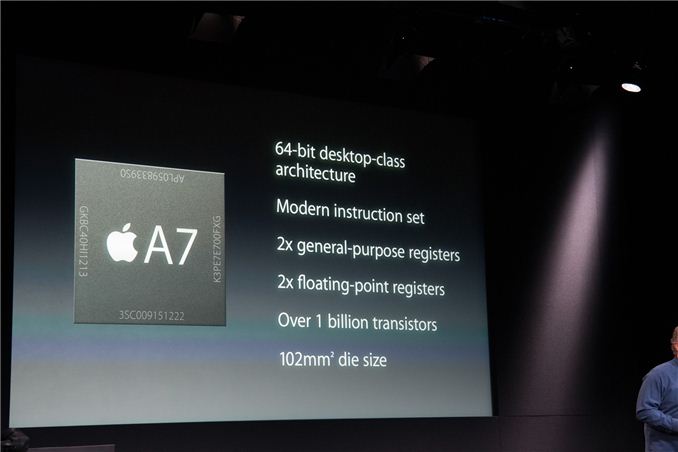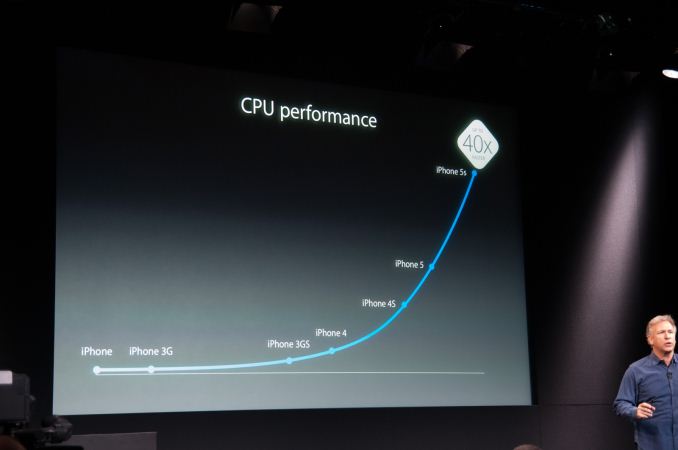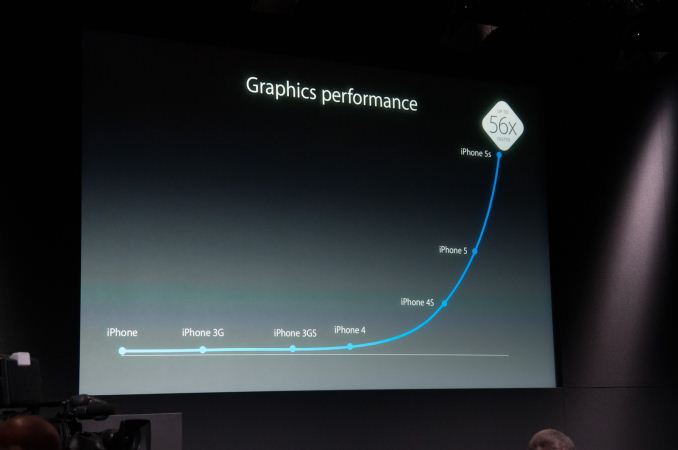Apple Announces A7, World's First 64-bit Smartphone SoC
by Anand Lal Shimpi on September 10, 2013 1:36 PM EST- Posted in
- Smartphones
- Apple
- Mobile
- SoCs
- iPhone 5S

Apple just announced the iPhones 5S featuring the A7 SoC, which is the world's first consumer ARM based SoC with 64-bit support. We're likely talking about an updated version of Apple's Swift microprocessor with ARMv8 support.
Check out our full coverage of Apple's Town Hall event in our live blog.












91 Comments
View All Comments
Stuka87 - Tuesday, September 10, 2013 - link
Exactly. Apple has invested a LOT in the A-series chips to just toss them aside for an Intel chip that doesnt really offer anything over what Apple currently has.easp - Tuesday, September 10, 2013 - link
They can't drop ARMv7, but they can start moving away from it, just as the move from 32 to 64 bit on OS X took multiple releases.As for the fact that ARMv8 and x86-64 are different ISAs, so what? Generation of machine code by the compiler is just a small part of the difference between a 32-bit software stack and a 64-bit software stack. There are surely choices about data structures, and perhaps even algorithms influenced by the difference between 32 vs 64 bit that are otherwise agnostic to ISA (and endianness).
danbob999 - Tuesday, September 10, 2013 - link
They are not any closer to moving away from ARMv7, because they just released a high end phone (don't tell me $600 is cheap for a phone) with ARMv7 in it. They will have to support it for years.yasinag - Tuesday, September 10, 2013 - link
may be apple building their own CPUs for iphone and mac's.Jon Tseng - Wednesday, September 11, 2013 - link
What I don't understand is how it can be twice as fast as A6 given its a similar die size (102mm2 vs 95mm2) and same process (TSMC 20nm). Sure there are some architecture gains w 64bit but they shouldn't be THAT dramatic...Anand/Brian any thoughts you have on this wld be very welcome. Probly some gaming of benchmarks in there but it still looks a very strange gap...
davidcTecher - Wednesday, September 11, 2013 - link
Where do you see that they're the same fab process? http://en.wikipedia.org/wiki/Apple_system_on_chips says A6 is 32nm and A7 is 28nmJon Tseng - Wednesday, September 11, 2013 - link
Ah good spot... I was forgetting them moving from Samsung to apple foundry. Duh!Still it's only a half node... I wonder what makes up the difference? Some core optimisation and benchmark jiggery pokers? Still seems a little bit of a stretch.
MrSpadge - Wednesday, September 11, 2013 - link
Simple: they try to not flat-out lie about their performance and rather search for some synthetic corner-case where they see the most improvement.. and that's what ends up on the marketing slides.psuedonymous - Wednesday, September 11, 2013 - link
Wasn't the Razr-i the first phone with a 64-bit SoC (the Atom Z2480)? Or is the A7 'more 64-bit' in some ineffable way than the Z2480?KitsuneKnight - Wednesday, September 11, 2013 - link
The Atom Z2480 is actually only 32bits, according to the Wikipedia Atom SoC page.